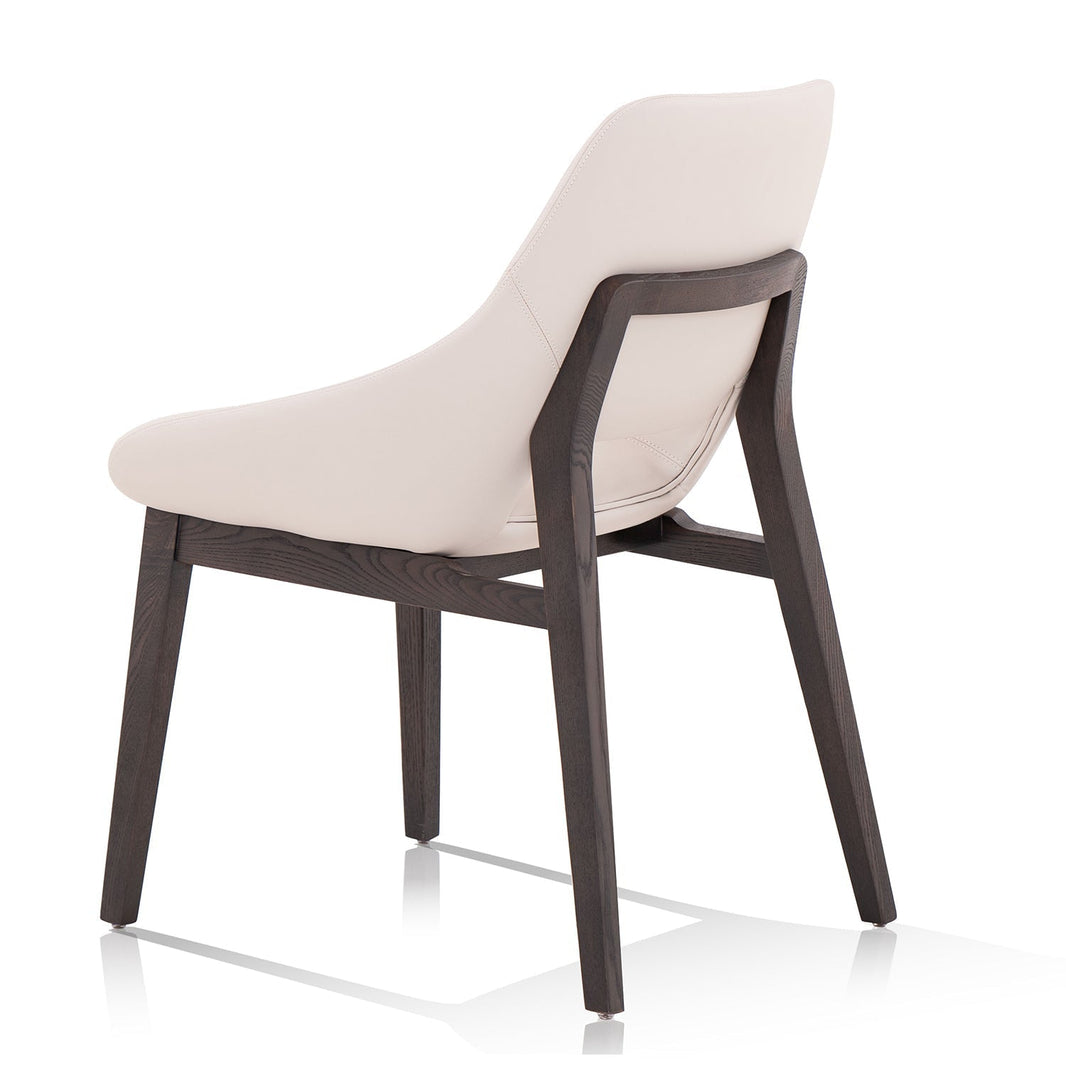A neutral dining room can do more than just serve as a place to eat; it can set the stage for relaxation and enjoyment. White, gray, and soft tones come together to create a calm atmosphere that enhances every meal. In this article, we'll guide you through the benefits of choosing a neutral palette for your dining area and give you easy-to-follow tips on how to pull it off. From selecting the perfect dining table and chairs to adding just the right amount of color and texture, get ready to discover how simple design choices can make a big difference in your dining experience.
How Colors Can Influence Your Dining Room?
The Basics of Color Psychology at Mealtime
Not just for artists and marketers; Color psychology plays a crucial role in how we experience our meals, too. Different colors can spark various emotions and even affect our appetite. For instance, ever notice how many fast food logos are red? That's because red is known to stimulate appetite and convey a sense of urgency. On the other end of the spectrum, blues and greens tend to suppress hunger – not ideal for a space dedicated to eating.
But what about neutral colors? They're often overlooked, yet they play an important role. Neutrals aren't just "safe" choices; they create a backdrop that allows our food (and the conversations around the table) to take center stage without any color-induced distractions. This makes neutrals a smart choice for those looking to turn their dining room into a peaceful retreat that's all about the joy of eating and company.
Neutral Shades: A Recipe for Relaxation
Neutral shades like white, grey, and soft pastels bring a sense of calm and sophistication to your dining space. Think of them as the culinary equivalent of a deep breath. These hues have a subtle way of promoting relaxation and focus, allowing you to unwind as you dine. Plus, they reflect light beautifully, which can make your space feel larger and more inviting.
These tones also serve as a versatile canvas for your table settings and decor. Whether you're serving a casual brunch or an elegant dinner party, neutral tones keep things chic without clashing with dishes, napkins, or centerpiece arrangements. It's like a classic white plate – it makes any dish served on it look more appealing.
Selecting the Ideal Color for Your Dining Table
Choosing the color of your dining table is a key decision in defining the dining room's mood and style. Neutral shades maintain a subtle elegance, but the particular tone you pick can uniquely enhance your space.
Here are some tasteful color options to consider for your dining table:
- Black Sand Color: A dining table with a black sand finish lends a strong, sophisticated presence. It's a dramatic choice that pairs well with any chair color and serves as a striking focal point.
- Grey Oak with Marble Accents: Whether paired with Jazz White or Wolf Grey marble, a grey oak table brings a modern, yet timeless charm. Jazz White offers a crisp contrast, while Wolf Grey provides a monochromatic appeal, ideal for creating a modern minimalist dining environment.
- Walnut with Jazz White Marble: The warmth of walnut, combined with the sleek Jazz White marble, strikes a balance between traditional elegance and modern sophistication. This combo fits a variety of decor styles from classic to contemporary.
-
Red Oak with Marble Options: Red oak tables evoke warmth and richness. Paired with the clean lines of Jazz White marble, it creates an inviting atmosphere. Alternatively, matched with the unique Yellow Cave Stone marble, it introduces a touch of distinctive color and texture that enlivens the space.

When making your selection, reflect on the existing color palette of your room. Darker tables like Black Sand or Walnut command attention and can anchor your dining area. Lighter colors, such as Grey Oak finishes, contribute to a more open, airy feel, potentially making small spaces seem larger.Marble is a great choice. For more about marble dining tables, check out this blog.Consider the type of ambiance you wish to create,different colors evoke varied atmospheres;warmer tones foster a cozy vibe, while cooler shades suggest a more formal air.
Ultimately, the dining table is a centerpiece that should resonate with your personal style and complement other decorative elements in your dining room. With mindful consideration of these aspects, you can find a dining table color that not only looks great but also enriches the dining experience.
How to Choose the Perfect Chair Colors for Your Neutral Dining Room?
To enhance the ambiance of your neutral dining room, selecting the right chair colors is essential. They should not only match the style and palette of your space but also provide comfort that lasts well beyond mealtime.
Here are some color options to consider for your dining chairs:
- Dusty Blue: Dusty blue chairs bring a subtle touch of color and can complement a range of neutrals. This soft hue adds a serene, calming presence to your dining area and works beautifully with wooden tables as well as white marble.
- Dark Coffee Color: Chairs in a dark coffee shade offer depth and a sense of warmth. This rich, deep color can serve as a striking contrast to lighter neutral tones, creating an inviting and grounded space.
- Camel: Camel-colored chairs exude a classic, sophisticated look. Their natural earthiness pairs well with a variety of wood finishes and can bridge the gap between casual comfort and upscale design.
- Grey: Grey chairs are incredibly versatile-they can either blend in with a monochromatic scheme or provide a cooling balance to warmer tones. For a modern twist, mix different shades of grey chairs around your dining table.
-
Creamy Grey: Creamy grey is a softer alternative to pure grey and can impart a more delicate and refined aesthetic. It's excellent for achieving a cozy yet chic vibe that doesn't stray too far from your neutral theme

When picking out chairs for your dining room, you must consider how they relate to your existing table and decor. Make sure there's ample legroom underneath the table and that the proportions of the chairs do not overwhelm the space. The upholstery should be practical-easy to clean materials like leather or treated fabrics are ideal for longevity and maintenance, especially in lighter colors like creamy grey or dusty blue.
In terms of design, balance is very important. If your dining table is simple and understated, chairs with bolder lines or richer colors like dark coffee can add interest. Conversely, a statement dining table might be best accompanied by more subdued chairs in camel or grey tones. Choose a backrest height that complements the formality of your dining environment; higher backs tend to lend a more elegant air while lower ones feel more casual.
Seat comfort cannot be overlooked. Cushioned seats are preferable for extended seating periods, and the resilience of the cushion material will contribute to the chair's longevity. Sturdy legs are necessary for stability, ensuring diners of all ages are supported.
Ultimately, the colors of your dining chairs should unify the room's aesthetic. Dusty blue or camel hues can introduce a gentle splash of color, while grey tones maintain a sleek, modern look. Whichever color you choose, it should invite diners into the space and encourage them to stay, gather, and engage-transforming meals into memorable experiences.
Final Thoughts
Think of your neutral dining room as the perfect backdrop that's ready for anything. It's a place where you can easily switch up the mood with different colors and textures whenever you feel like it. Keep things simple for day-to-day life, but don't be afraid to jazz it up with some seasonal touches or fun bits and pieces for special dinners. This way, your dining area stays practical for everyday eating while also being a space that gets everyone excited to sit down and enjoy a meal together, no matter the occasion.








